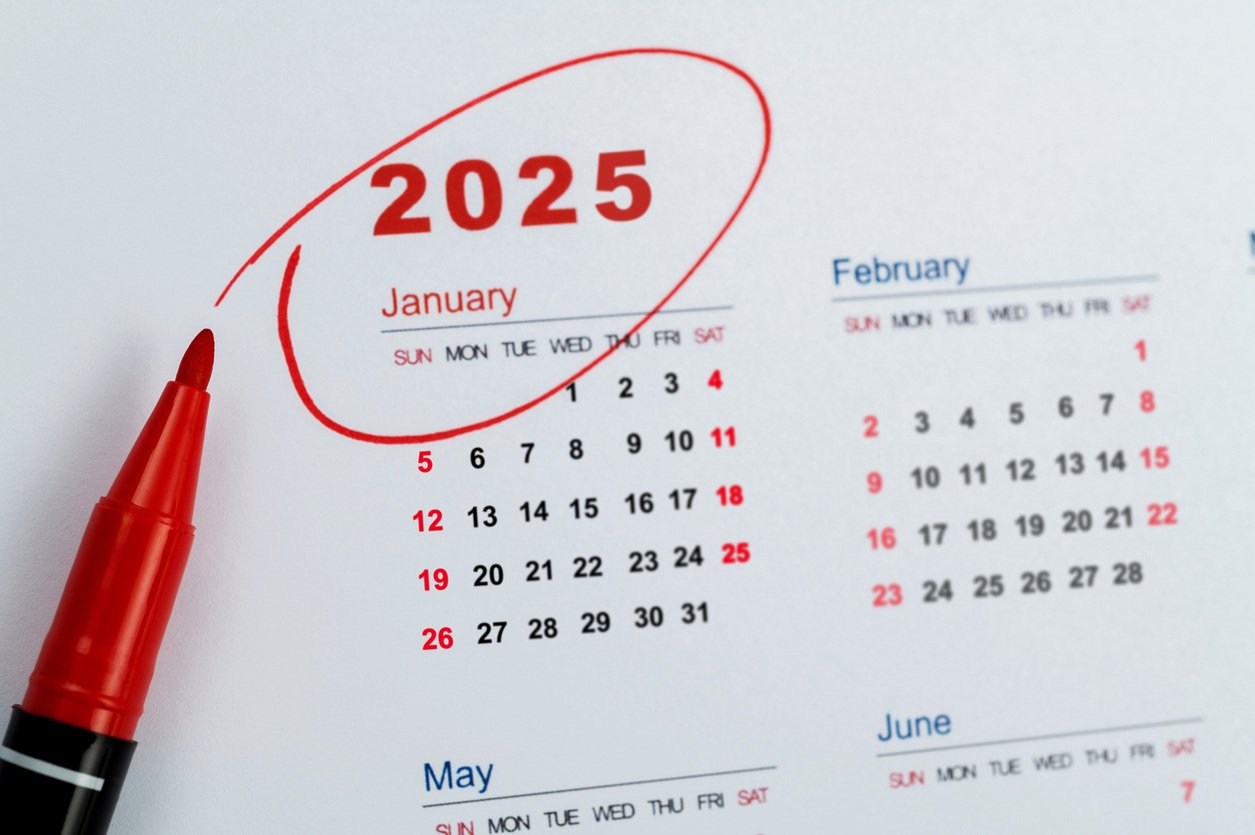
Written by
Germeen Tanas
Germeen is an aPHR-certified writer on the marketing team at BerniePortal. She writes about HR, healthcare, and benefits.
EEOC Guidelines for AI in the Workplace

In 2023, iTutorGroup, an online learning platform based out of China, used an Artificial Intelligence (AI) recruitment software that was programmed to automatically reject all female applicants above the age of 55, and all male candidates above the age of 60. The company was sued for violating the Age Discrimination in Employment Act (ADEA) and paid a fine of $365,000 to more than 200 job applicants. This was the first U.S. bias lawsuit involving AI hiring tools.
As we’ve seen throughout history, societal changes often call for new legislation. In October of 2022, only a year before the iTutorGroup lawsuit, the Equal Employment Opportunity Commission (EEOC) responded to contemporary society’s widespread use of AI by developing a blueprint for an AI Bill of Rights. In 2023, guidance on the use of AI in the workplace was amended to Title VII of the Civil Rights Act of 1964.
How Is HR Using AI in the Workplace?
There’s no doubt that AI can save HR time and energy. Today, many HR professionals are regularly using AI to help with the following workplace tasks:
- Recruitment and hiring: to analyze resources, screen applicants and resumes
- Employee Onboarding: to personalize learning using virtual reality systems
- Task Management: to optimize scheduling and reallocate resources to save HR time and energy
- Meeting Management: to track meeting notes and action items
- HR Administration and Compliance: to automate payroll and benefits administration processes.
EEOC Guidelines for AI in the Workplace
As we’ve seen with the iTutorGroup lawsuit, without proper safeguards on the use of AI in the workplace, HR may run the risk of violating the ADEA, The Civil Rights Act of 1964 or other significant discrimination laws.
On May 18, 2023, the EEOC released a technical resource on AI and Title VII called: “Assessing Adverse Impact in Software, Algorithms, and Artificial Intelligence Used in Employment Selection Procedures Under Title VII of the Civil Rights Act of 1964.” This document focuses on preventing workplace discrimination.
The document asks the following primary questions:
-
Does the employer use a particular employment practice that has a disparate impact on the basis of race, color, religion, sex, or national origin?
-
If so, can the employer show that the selection procedure is job-related and consistent with business necessity?
-
Is the selection procedure associated with the skills needed to perform the job successfully?
-
Is there a less discriminatory alternative available?
What Is the “Four-Fifths Rule”?
The “Four-Fifths rule,” published by the EEOC in 1978, states that one rate is substantially different from another if their ratio is less than four-fifths (or 80%). Sometimes, it can be difficult for employers to detect if their processes are biased or discriminatory. The EEOC has developed this rule of thumb to help employers determine if their algorithmic selection processes result in discrimination or involve bias. The technical assistance document uses the following example to explain the rule:
An employer administers a personality test to 80 White applicants and 40 Black applicants. 48 of the White applicants and 12 of the Black applicants advance to the next step. The selection rate is thus 48/80= 60% for White applicants and 12/40 or 30% for black applicants. The ratio of the two rates is 30/60=50%, which is less than 80%, thus failing to meet the requirements of the four-fifths rule. The employer may be able to conclude that the personality test administered discriminates against Black applicants.
Keep in mind that the rule is just a guideline and isn’t applicable in all circumstances. An AI-related employment practice that follows this rule isn’t necessarily lawful.
There has been a push in recent years to ditch the four-fifths rule. According to an AI Bias panel, “The four-fifths rule is a proclamation that practices that keep up to 20% more of a disadvantaged group from being hired should be accepted without further scrutiny.” Thus, the four-fifths rule begs the following question: Is it legal to discriminate by a smaller margin? As an HR pro, you know that it is illegal for a single person to be discriminated against because of the AI tools you use.
What Is the “No Third-Party Shield”?
The “No Third-Party Shield” states that you could still be held liable for what a platform does on behalf of your employer. Under Title VII, an employer is responsible for its use of algorithmic decision-making tools or AI even if their selection process goes through a third-party entity or software.
So, if I am an HR Party of One at a small business and I decide to outsource my recruitment process to an online recruitment platform, I could still be held liable for any discrimination that occurs on behalf of my employer. That’s why it’s extremely important for HR leaders and hiring managers to analyze, evaluate, and regularly monitor the processes that job sites and recruitment platforms use.
ADA AI Guidance
The use of AI in the workplace can also violate requirements under the Americans with Disabilities Act (ADA). According to the EEOC, an employer’s use of algorithmic decision-making tools may violate the ADA by:
- Screening out an individual with a disability: the algorithm could prevent a job applicant from meeting selection criteria.
- Asking job applicants questions with the intention of gaining information about a disability or medical condition prior to a conditional offer of employment
- Automatically forgoing offering reasonable accommodation to job applicants (ex. an applicant cannot interview on video).
As a general rule, screening out an applicant is considered to be a violation of the ADA if the applicant can perform the essential functions of the job, with or without reasonable accommodation.
What’s in The White House’s Blueprint for an AI Bill of Rights?
Lawmakers are focused on the issue of AI as it impacts American society today and aim to protect individual rights, opportunities, and access to resources. This 73 page document titled “The BluePrint for an AI Bill of Rights: Making Automated Systems Work for the American People” was published in October 2022 and highlights the following points:
- You should be protected from unsafe or ineffective systems.
- You should not face discrimination by algorithms and systems should be used and designed in an equitable way.
- You should be protected from abusive data practices via built in protections and you should have agency over how data about you is used.
- You should know that an automated system is being used and understand how and why it contributes to outcomes that impact you.
- You should be able to opt out, where appropriate, and have access to a person who can quickly consider and remedy problems you encounter.
Best Practice for AI in the Workplace
At our most recent Weekdays with Bernie conference, Meredith Box, a representative from Ford Harrison LLP, urged HR professionals to understand that the responsibility will ultimately fall on them to make ethical choices when using AI.
She shared the following best practices when it comes to protecting your business and implementing AI:
- Bring the experts to the table: If you are really unsure about an employment practice you are seeking to implement, reach out to an employment lawyer or AI expert
- Identify AI tools and processes: Develop clearly defined policies and procedures for employment.
- Regularly self-audit and monitor: Test the data and the product on a regular basis, and retain records for evidence.
- Conduct audits and self analyses on a regular basis: Determine if your employment processes have a large negative impact on particular groups of people.
- Implement regular user training: this can help ensure all parties involved are using AI ethically.
- Know the purpose: if you’re going to use AI, have a clear reason for why you’re using it.
- Be transparent: If you’re going to use AI in the recruitment or interviewing process, inform candidates of that as early on as in the job descriptions
For more information, check out our blog on the implications of using AI during recruitment.
Additional Resources
You can stay informed, educated, and up to date with important HR topics using BerniePortal’s comprehensive resources:
- BernieU—free online HR courses, approved for SHRM and HRCI recertification credit
- BerniePortal Blog—a one-stop shop for HR industry news
- HR Glossary—featuring the most common HR terms, acronyms, and compliance
- Resource Library—essential guides covering a comprehensive list of HR topics
- HR Party of One—our popular YouTube series and podcast, covering emerging HR trends and enduring HR topics
- Community—the HR Party of One Community forum, a place devoted to HR professionals to ask questions, learn more, and help others

Written by
Germeen Tanas
Germeen is an aPHR-certified writer on the marketing team at BerniePortal. She writes about HR, healthcare, and benefits.
Related Posts
Each year, new state and local regulations take effect, and with a new administration...
As we approach 2025, it's essential for HR professionals to plan for the upcoming year's...
From major holidays to key compliance and ACA deadlines, here’s everything you need to...








Submit a Comment